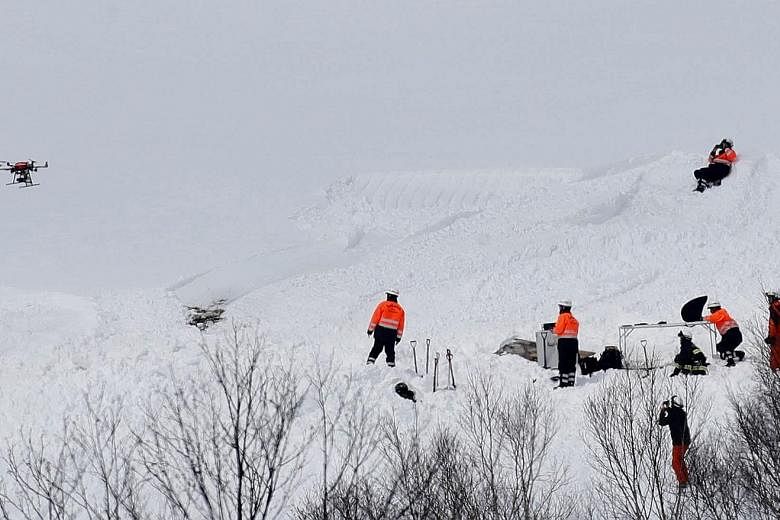TOKYO • Investigators combed through a Japanese mountain yesterday after a massive avalanche tore through a group of high school students and teachers, killing eight, amid questions about why an avalanche warning was ignored and whether they had proper equipment.
The avalanche in central Japan on Monday, which struck along some 50m of a steep slope just above a ski area, killed seven students and an instructor. They were part of a 48-person group taking part in winter climbing training.
Thirty-eight people were injured, two of them critically.
Survivors told Japanese media that they were training in a wooded area in Nasu, a town in Tochigi prefecture 160km north of Tokyo, when suddenly there were shouts of "Avalanche, get out of here!" and voices yelling to take cover.
"A second later, the snow was there and I was buried up to my chest," said one 16-year-old student.
"My face was free so I managed to get myself out. It was scary."
The students who died, all aged 16 and 17, were from a local high school known for its prowess in competitive mountain climbing. They were at the front of the group when the avalanche struck on the final day of a three-day training camp.
An avalanche warning was in place at the time.
The father of 16-year-old Kosuke Sato, one of those who died, displayed the torn windbreaker his son had worn.
"I still can't believe it," he told TBS television, choking back tears.
The group changed an original plan to climb a nearby mountain due to heavy snow and strong winds, switching instead to practise walking in deep snow on a steep slope, the media reported.
"Spring is much more dangerous in terms of avalanches than winter," mountaineer Ken Noguchi, himself the survivor of several avalanches, said on TV Asahi.
Others blamed temperature fluctuations and deep, fresh snowfall on top of older snow.
"After that heavy a snowfall, of course, it was highly likely you'd get caught in an avalanche if you went out,"rescuer Itsuro Watabe told TBS.
A Tochigi prefectural police spokesman said investigations, which included the use of drones, were focused on whether there had been errors of judgment, in particular by the Tochigi High School Athletics Federation, which sponsored the training.
He declined to give further details but added that investigators were also looking into whether the students had safety equipment, including beacons that can help locate those swept up in avalanches.
Mr Atsuhito Masuguchi, head of the Tochigi High School Athletics Federation, said the training had been held for decades.
"It's conducted by our mountain specialists, and we relied on their judgment of conditions and actually carrying out the training.
"They're the experts," he added.
"We've done this for more than 50 years.
"This was the first accident."
REUTERS

